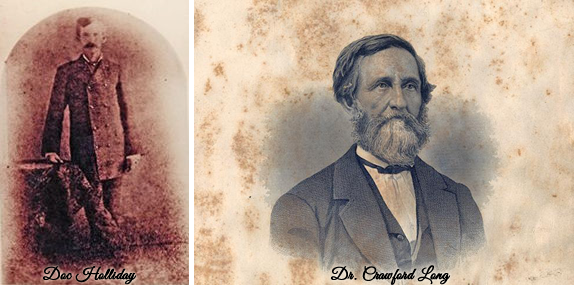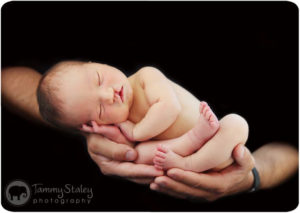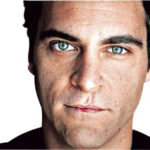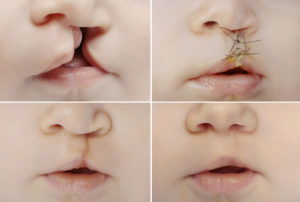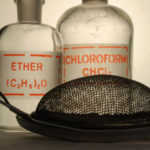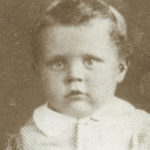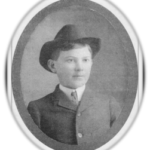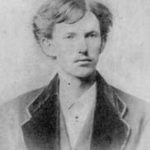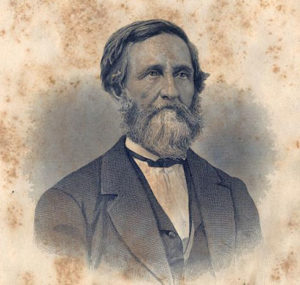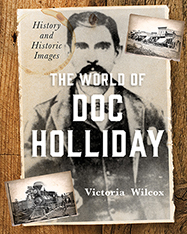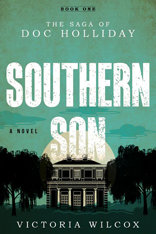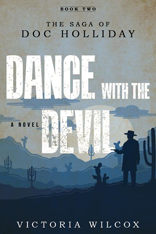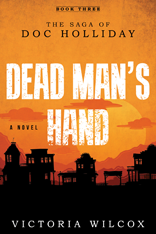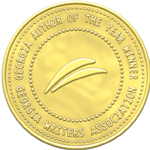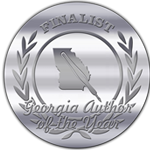Doc Holliday is one of the great legends of the Wild West, his life an epic adventure that’s been told and retold in literature and film. But without the help of another legendary doctor, he might never have seen the Wild West at all.
According to one old family story, John Henry Holliday was born with a cleft palate that threatened his life and required a dangerous surgical procedure – the surgery performed by his medical doctor uncle, John Stiles Holliday, assisted by the Holliday’s relative Dr. Crawford Long, who pioneered the use of ether anesthesia in surgery (see links below).
A cleft palate occurs during pregnancy, when the two halves of the baby’s mouth do not connect and grow together as they were designed to do. It’s that joining together that makes a suture line down the roof of your mouth and gives your lips that pretty bow shape. If that joining doesn’t happen, a baby is born with a “cleft” – a gap in the roof of the mouth that opens up into the sinuses. If the cleft continues into the lip and up into the nose, it’s what is known as a “harelip”…

Rabbit (Hare)
…because it looks something like the mouth of a hare or rabbit, with that line from the mouth to the nose. That’s a natural look for a rabbit, but a physical deformity in a human.
On actor Joaquin Phoenix, who has what’s called a micro-cleft that only affects the lip, it’s an interesting facial feature. But for a baby born with both a hairlip and a cleft palate, the deformity can be deadly. The baby can’t nurse properly, can’t take in enough milk to thrive, may even aspirate milk into the lungs and develop pneumonia.
The treatment for cleft palate and harelip is surgery to bring the two halves of the cleft together. Today, the recommended time for the surgery is the first few months of life, when the baby is still growing and there is the best chance for healing. But before Dr. Crawford Long’s experiments with ether, there was no anesthesia for the surgery – only alcohol or laudanum to make the patient drugged. For a baby, that wasn’t a possibility. So when John Henry Holliday was born with a cleft palate and harelip, his parents sent for his uncle, Dr. John Stiles Holliday (the man who would later build the white-columned Holliday-Dorsey-Fife House) to do the surgery and their relative Dr. Crawford Long to administer ether anesthesia.
It may have been the very first time that ether was given to an infant in surgery, making the operation both historic and dangerous. Although Dr. Long had been administering ether for nearly a decade we don’t know that he had ever used it on a baby, and Dr. Holliday who would perform the surgery was only 29 and had likely never done such a procedure before. So why the rush? Why not wait a few more months? There’s a missing piece of the story here that may hold the answer.
The Hollidays had already lost one baby – a girl named Martha Eleanora, born 18 months before John Henry’s birth. As her small gravestone in Griffin, Georgia’s Rest Haven cemetery records:
In memory of Martha Eleanora
daughter of H.B. and A.J Holliday
who died June 12th 1850
Aged 6 months 9 days.
Such a sad short life! We don’t know what caused her death – it may have been diphtheria that was raging in the area, or it may have been a cleft palate, as the deformity runs in families. What we do know is that just three months after her first baby died, Alice Jane McKey Holliday was expecting again. And when her second baby was born with a cleft in his mouth that threatened his life, his parents were desperate to save him. And with the help of Dr. Long’s ether to ease the pain of surgery, the baby John Henry survived and thrived.
By the time of his first birthday, when this portrait was made, there was little evidence of the physical trauma that had started his young life, just a faint scar running up from the left side of his mouth.
As he learned to talk and then read, his mother gave him her own method of speech therapy. She created a picture book full of items whose names included sounds that were difficult for him to pronounce. With such therapy, most cleft palate children can speak normally by the age of 5. This portrait of John Henry Holliday was made when he was about 10 years old, around the time his family moved from Griffin to Valdosta.
During his time in dental school in Philadelphia, the beginnings of a mustache covered any remaining scar from his infant ordeal. But is there any documentary proof to this family story? Surely, such a groundbreaking surgery would have been recorded in Dr. Crawford Long’s journals – if he had kept any. We don’t know that he did, or if he did, whatever became of them.
The only anecdotal evidence we have comes from someone who never knew Dr. Crawford Long or Doc Holliday: his cousin Robert’s wife, Mary Fulton Holliday. But she did know his Aunt Permelia, her own mother-in-law who had lived in the white-columned Holliday House and whose husband, Dr. Holliday, had supposedly performed the surgery. According to Mary Fulton Holliday’s granddaughter, author Karen Tanner, Mary told the story of the cleft palate surgery and the speech lessons that followed in a letter she wrote in 1940 – by then, nearly a century after the events. Unfortunately, the letter (if it does exist) is locked away in the archives of the Haley Library in Texas, not to be revealed until twenty years after the death of Karen Tanner, who is still very much alive. One has to wonder, when sources are kept secret, if they actually say what the author claims.
But if the story is true, it’s a remarkable piece of American medical history: Dr. Crawford Long, legendary pioneer in the use of ether in surgery, helping to save the life of a baby boy who would grow up to be the legendary Doc Holliday. Those who knew Doc during his Wild West Days never commented on any abnormality in speech or appearance – only that he had a very fine set of teeth. It would be the pain of consumption that caused him to drink and killed him in the end, not the side effects of a cleft palate. And isn’t it ironic that the baby John Henry Holliday was given a drug to take away his pain, then spent most of his adult life drowning his pain in alcohol? But without that surgery, made possible by Dr. Crawford Long and his use of ether anesthesia, Doc Holliday may not have lived long enough to become a legend at all.
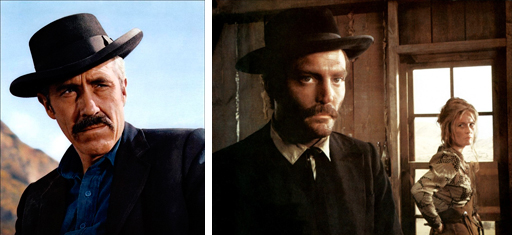
Two actors with cleft lips who played Doc Holliday: Jason Robards (in 1967’s “Hour of the Gun”) and Stacey Keach (in 1971’s “Doc”)
Fun Links:
Dr. Crawford Long
Crawford Long Museum, Jefferson, Georgia
Interactive History of Anesthesia
Author Mary Doria Russell on Doc’s Cleft Palate
Famous People with Cleft Lips
Click the book cover below for more info or to order.
